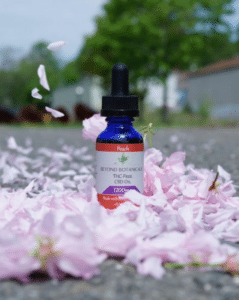
When it comes to buying CBD products, two things that customers usually prioritize are cost and milligram strength. But there is another factor that’s not as easy to determine from simply reading the label on a product- bioavailability. If you are unfamiliar with the term, bioavailability is a concept that explains what fraction of the total amount of a compound absorbs into the body. Today’s hemp consumer is becoming increasingly conscious of bioavailability as their knowledge of the hemp plant expands.
What Exactly is Bioavailability?
Bioavailability is a chemistry term to describe how efficiently the compounds of the hemp plant absorb into the body. That is to say, bioavailability plays a major role in how effective a product is. If a compound struggles to properly absorb into the body, it cannot produce the desired effects. Instead, it may be digested before entering the bloodstream. In other cases, it may be ineffective before it even enters the body, as is the case with expired CBD products. Bioavailability is enormously important because it makes all the difference in effective versus ineffective products.
One thing to know about bioavailability is that it’s not something that can be easily quantified, like the number of milligrams of hemp in a formula. Metabolisms, methods of delivery, and freshness all play a role in bioavailability.
What Makes Some CBD Products More Bioavailable Than Others?
Each of these factors below impacts the effectiveness of a CBD product to varying degrees.
Factor #1: Oil-Soluble vs. Water-Soluble
A hemp extract produced by running the plant material through a CO2 extraction or distillation process is oil-soluble by nature. That’s because when the compounds are extracted, the natural oils of the plant become highly concentrated. Oil-soluble CBD products dominate the market, and most of them are readily bioavailable. Water soluble CBD products are a popular new trend due to allegedly higher bioavailability, but those outcomes are not proven yet.
Because the body is largely made up of water, the concept is that water-soluble formulas absorb more easily into the cells, whereas oil and water notoriously do not mix. Water-soluble CBD is produced using “nanotechnology”, which claims to take standard oil-soluble hemp extracts and changes them molecularly so that they absorb in water rather than oil.
Water soluble CBD products are generally harder to find in the market due to these unproven claims. Therefore, it’s important to note that just because there are claims water-soluble CBD is more bioavailable, that doesn’t mean that standard oil-soluble formulas are going to be a letdown. Most CBD is oil-soluble, and a vast majority of CBD users find it highly effective for their needs.
Factor #2: Milligram Strength
The milligram strength of a product determines how potent it is. Appearing prominently on the product label, it states how many milligrams of hemp we are consuming or applying per serving. The more milligrams we are taking at once, the more CBD actually absorbs into the body. This is why products with higher milligram strengths are more effective. While there’s always a chance that some of the CBD we take gets excreted or otherwise not used before it gets a chance to circulate throughout the body, taking a higher strength ensures that we get as much active hemp into the body as possible.
Factor #3: Age and Chemical Stability
We tend to overlook the importance of age and stability when it comes to hemp products. But, the reality is that these factors are enormously important as far as bioavailability is concerned. Chemical stability refers to a compound’s penchant to remain as-is or begin breaking down based on environmental conditions like heat or light. Because unstable compounds can break down easily and degrade before they can take effect, finding products with a good shelf life is important. One of the largest factors in stability of a product is age. This is why it’s important that all CBD products have a “best by” or expiration date on the label. Generally, reputable manufacturers have conducted shelf life testing with an independent laboratory. Tests like these establish how long their products are stable for.
Another factor that influences the stability of your CBD is storage. Anything but a cool, dark, and dry environment can cause the compounds to oxidize and degrade quickly. Then, there is the extraction method. Solvent methods can destabilize the compounds before the finished product is even formulated. CO2 extraction is known to maintain the stability of the chemical compounds in hemp. This stability is the main reason CO2 extraction is so popular.
Factor #4: The Variety of Hemp Compounds Present
Many experts will tell you that full spectrum hemp extract is the most bioavailable form of hemp that there is. Full spectrum hemp contains, as the name implies, the complete family of compounds present in hemp. This allows for the entourage effect to action. This effect posits that hemp compounds are more effective when able to work synergistically together, as opposed to isolates.
Factor #5: Type of Formula via Delivery Method
Different delivery methods have unique levels of bioavailability, which is why some delivery methods act more quickly and work more potently than others. Inhalable products are popular for being the most bioavailable due to how easily the lungs absorb the compounds in the hemp plant. Edibles are on the slowest end of the spectrum, but if all of the other important bioavailability factors are there, they can still be enormously effective, which is why they are so popular.
Maximizing Bioavailability for an Effective Cannabidiol Routine
Your success with CBD products depends majorly on their potency, stability, and freshness. Now that you know what factors can affect how readily absorbable CBD is, you can apply this information to future purchases to ensure that you enjoy a routine which promotes maximum absorption.
